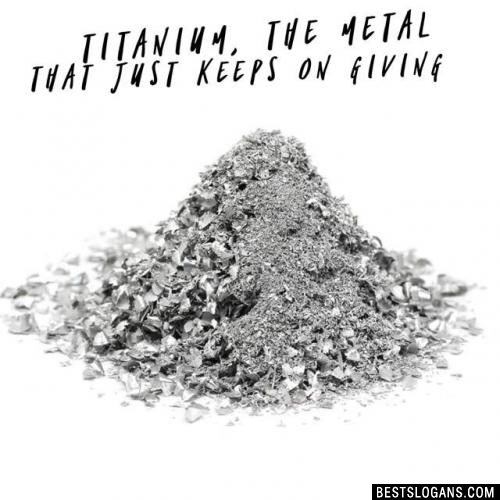
Low = substitution is possible with little or no economic and/or performance impact Medium = substitution is possible but there may be an economic and/or performance impact High = substitution not possible or very difficult. The availability of suitable substitutes for a given commodity. A higher recycling rate may reduce risk to supply. The percentage of a commodity which is recycled. The number of atoms of the element per 1 million atoms of the Earth’s crust. This is calculated by combining the scores for crustal abundance, reserve distribution, production concentration, substitutability, recycling rate and political stability scores. The Chemical Abstracts Service registry number is a unique identifier of a particular chemical, designed to prevent confusion arising from different languages and naming systems.ĭata for this section been provided by the British Geological Survey.Īn integrated supply risk index from 1 (very low risk) to 10 (very high risk). Where more than one isotope exists, the value given is the abundance weighted average.Ītoms of the same element with different numbers of neutrons. This is approximately the sum of the number of protons and neutrons in the nucleus. The mass of an atom relative to that of carbon-12. The transition of a substance directly from the solid to the gas phase without passing through a liquid phase.ĭensity is the mass of a substance that would fill 1 cm 3 at room temperature. The temperature at which the liquid–gas phase change occurs. The temperature at which the solid–liquid phase change occurs. The arrangements of electrons above the last (closed shell) noble gas. These blocks are named for the characteristic spectra they produce: sharp (s), principal (p), diffuse (d), and fundamental (f). The atomic number of each element increases by one, reading from left to right.Įlements are organised into blocks by the orbital type in which the outer electrons are found. Members of a group typically have similar properties and electron configurations in their outer shell.Ī horizontal row in the periodic table. The University of Silesia in Katowice has already started preparations for the next research expedition on the Oder River, which is planned for September.A vertical column in the periodic table. The results will provide important input for further comparative studies and the development of a river rescue strategy. The results of the work of experts from the University of Silesia and the University of Szczecin will allow to determine the state of the Oder River along most of the river course from the period just before the disaster or from its beginnings. Thanks to the conducted measurements, it will be possible to determine whether there were any hazardous substances in the Oder River in mid-July, and whether the water parameters indicated a threat to living organisms. concentration of: sulphates, chlorides, orthophosphates, ammonium nitrogen, nitrate nitrogen, chromium (VI), arsenic, antimony, calcium, magnesium, sodium, iron, manganese, zinc, cadmium, lead, chromium, copper, nickel, cobalt, barium, boron, beryllium, aluminium, vanadium, molybdenum, silver, thallium, titanium and tin as well as nitrogen using the Kjeldahl method and total phosphorus,Ĭurrently, chemical analyses of water samples are carried out, the results of which, together with the analysis, will be published by the University of Silesia in the near future.Thanks to the conducted analyses, it will be possible to perform laboratory determinations, including the following indicators: Physicochemical measurements of river water were made using multi-parameter immersion probes, measuring, among others:Īdditionally, in selected places, scientists collected water samples for analysis in accredited laboratories, along with material for diatoms (algae) tests, and measurements of the flow, vertical distribution of water velocity and cross-sections of the Oder River bed. The aim of the research expedition was a comprehensive analysis of the river’s condition. During the expedition, scientists travelled a distance of about 80 kilometres every day, making detailed measurements approximately every 1 km. The research expedition, under the slogan “Clean Oder? Why Not”, was organized jointly with the “Why Not” foundation.ĭue to the low water level, the kayaking expedition was started in Ostrava, then the UŚKA II research boat was launched in Kędzierzyn-Koźle. Institute of Journalism and Media Communicationīetween 15-24 July 2022, scientists from the Silesian Water Centre of the University of Silesia in Katowice, together with researchers from the University of Szczecin, conducted research on the Oder River on the section from Ostrava to Szczecin.Institute of Biology, Biotechnology and Environmental Protection.

Institute of Social and Economic Geography and Spatial Management.International Environmental Doctoral School.Faculty of Arts and Educational Science.


 0 kommentar(er)
0 kommentar(er)
